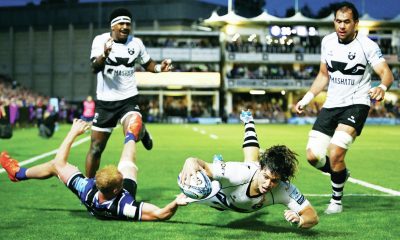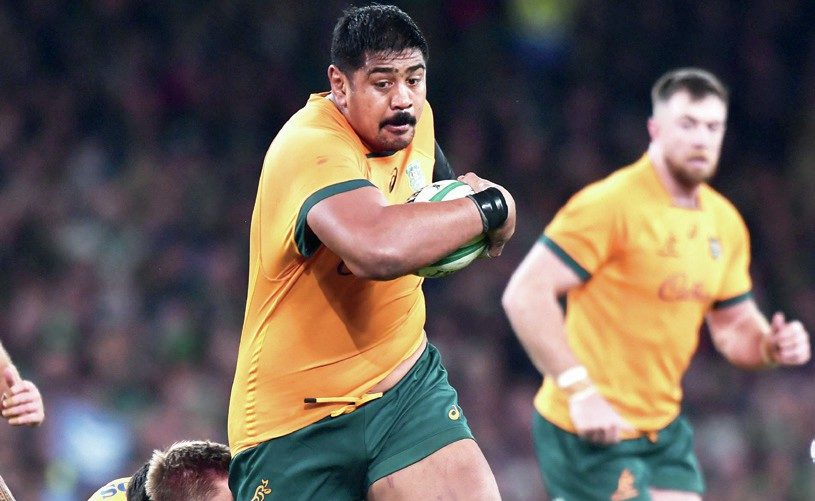 If England can show the sort of staying power that Stuart Lancaster demonstrated at Twickenham last Thursday then it will hold them in good stead during the 2014 Six Nations. The England head coach broke all records for a Press briefing as he stood and delivered for three hours, starting with an off-the-record insight into the English identity he wants to instil,
If England can show the sort of staying power that Stuart Lancaster demonstrated at Twickenham last Thursday then it will hold them in good stead during the 2014 Six Nations. The England head coach broke all records for a Press briefing as he stood and delivered for three hours, starting with an off-the-record insight into the English identity he wants to instil,
following it with the treatise on attack, and finishing by answering questions on his three-tier England squad selections (Six Nations, Senior and Saxons).
What emerged is that Lancaster is prepared to keep an open mind on selection, and, less than two years before the World Cup, rather than batten down the hatches, to make important decisions.
The most significant of these is promotion into the Six Nations squad of George Ford, Anthony Watson, Jonny May, Luther Burrell and Jack Nowell. Their elevation is a reward not only for form but also recognition that the England attack has been too bland and is in urgent need of spicing up if they are to be true world champion contenders in 2015.
The England head coach appears to have accepted that even when Brad Barritt and Manu Tuilagi have been paired at centre during his first two years in charge his backline has lacked guile and variation. Against the world’s top six sides it has been too easily read and predictable – with the notable exception of the autumn 2012 victory over New Zealand when Tuilagi ran riot in seven extraordinary minutes.
The introduction of Ford into the fly-half mix suggests that Owen Farrell‘s position as the England No.10-elect for 2015 is open to question, and for those of us who have championed Ford’s credentials as the best and most natural fly-half controller available to Lancaster, it has come at the right juncture.
Ford’s moved to Bath this summer has seen him flourish, and the more time the 20-year-old has had on the pitch the more assured and inventive he has become. Farrell has great qualities, being an 83 percent goalkicker and a sledgehammer tackler among them, but he does not have Ford’s elusiveness, eye for a gap, acceleration or facility to take the ball to the gain-line and conjure openings for other runners.
All the truly great teams have fly-halves with something special about them, whether you are talking New Zealand during Dan Carter’s tenure, England when Jonny Wilkinson was in his prime, Joel Stransky when South Africa won their ‘Rainbow Nation’s’ World Cup, or Phil Bennett and Barry John when the Lions ruled the world in the Seventies.
Ford has a very long way to go before he joins that pantheon of immortals – and maybe he never will – but he has all the hallmarks of being a game-changer. He gave a demonstration of this in Bath’s draw with Leicester at Welford Road last weekend when he cut his former Tigers team-mates to shreds, creating tries for Francois Louw and Jonathan Joseph.
It was a timely reminder of how a gifted fly-half can change not just the face of a game but become a creative force capable of shaping the destiny of a team. The acid test, however, is not bringing Ford into the fold so much as getting him onto the field.
Ford has to go beyond being squad wallpaper in this Six Nations if he is to be ready for 2015. He has to be on the bench against France and then, almost irrespective of the result in Paris, he should make his debut as the starting fly-half against Scotland at Murrayfield.
It is a matter of record that about once every decade England come a cropper north of the border, and it is also a truism that if you take any side for granted in Test rugby it will come back to bite you. However, Lancaster taking the opportunity to blood Ford does not equate with taking the Scots lightly. The risk is a calculated one because Ford is richly talented, and Scotland, for all the fervour they will muster against England, are ninth in the IRB world rankings.
If you’re good enough you’re old enough is a cliche that sums up not just Ford’s rise but also that of Watson – and the 19-year-old winger might even make his debut in Paris before his Bath team-mate. It is not just Watson’s 6ft 2in and just less than 15st which instils confidence that he has the pace and physical armoury to meet the challenge, it is also his reading of the game in attack and defence.
How well Saracens go against Toulouse today could dictate the shape of the rest of the England backline against France in a fortnight, and especially whether Billy Twelvetrees and Burrell form a new centre pairing.
Lancaster must be sorely tempted to opt for a relatively experienced Saracens club-country combination of Farrell at 10 and Barritt at 12, with either Burrell, Kyle Eastmond, Twelvetrees, or May at 13. However, with Barritt only just back from injury, the chance to unleash two big, direct, hard-running centres like Twelvetrees and Burrell at the French may prove too tempting.
With Chris Ashton’s defence still wobbly against Australia and New Zealand in the autumn there is also a strong case to be made to give May a chance on the wing. England have to discover whether a back-three attack of Mike Brown at full-back alongside Gloucester speedster May and Watson can dovetail to give England an enhanced counter-attacking edge.
However, while Brown was England’s most persistent and effective attacker during the autumn series, Lancaster made it clear that it was nip and tuck with Alex Goode for the full-back shirt.
“Mike’s ability in the back-field is brilliant, but he needs to work on his linking and kicking – at the moment Mike has the shirt, but what Alex gives you is flexibility.”
Nowell is another who gives you flexibility, and although he has made rapid progress it is still too soon for the Exeter wing to force his way into the starting 23.
A further talking point was Danny Cipriani being left out of all three squads.
While Lancaster acknowledged the improvements Cipriani has made this season at No.10 for Sale Sharks, he argued, with some justification, that his form did not push him ahead of either Ford or Stephen Myler in the pecking order.
The England head coach said of his Six Nations backline promotions: “These are the sort of X-factor players we are looking for, players with a point of difference…it is hugely exciting to have this group coming through and they have all got a chance to put a marker down. Now is that time.”
Lancaster went on to say that his job was to get them thinking not just in terms of the diamond attacking formation with a support runner off either shoulder of the ball-carrier, but being able to leave defences off-balance by having a two-sided attack.
He added: “The trick for us now is to put them into our environment to understand kicking and defensive systems.”
That may be one trick, but there is a much more impressive one. Namely, recognising that Test rugby is meant to be about fine-tuning rather than re-inventing the wheel. This means ensuring that the natural flair and instinct players like Ford, Watson and May bring does not disappear under an avalanche of defensive and tactical data from the England coaching staff.

2 Comments
You must be logged in to post a comment Login
Leave a Reply
Cancel reply
Leave a Reply
You must be logged in to post a comment.
































Pingback: centrale de tratare aer
Pingback: ที่พักเชียงคาน